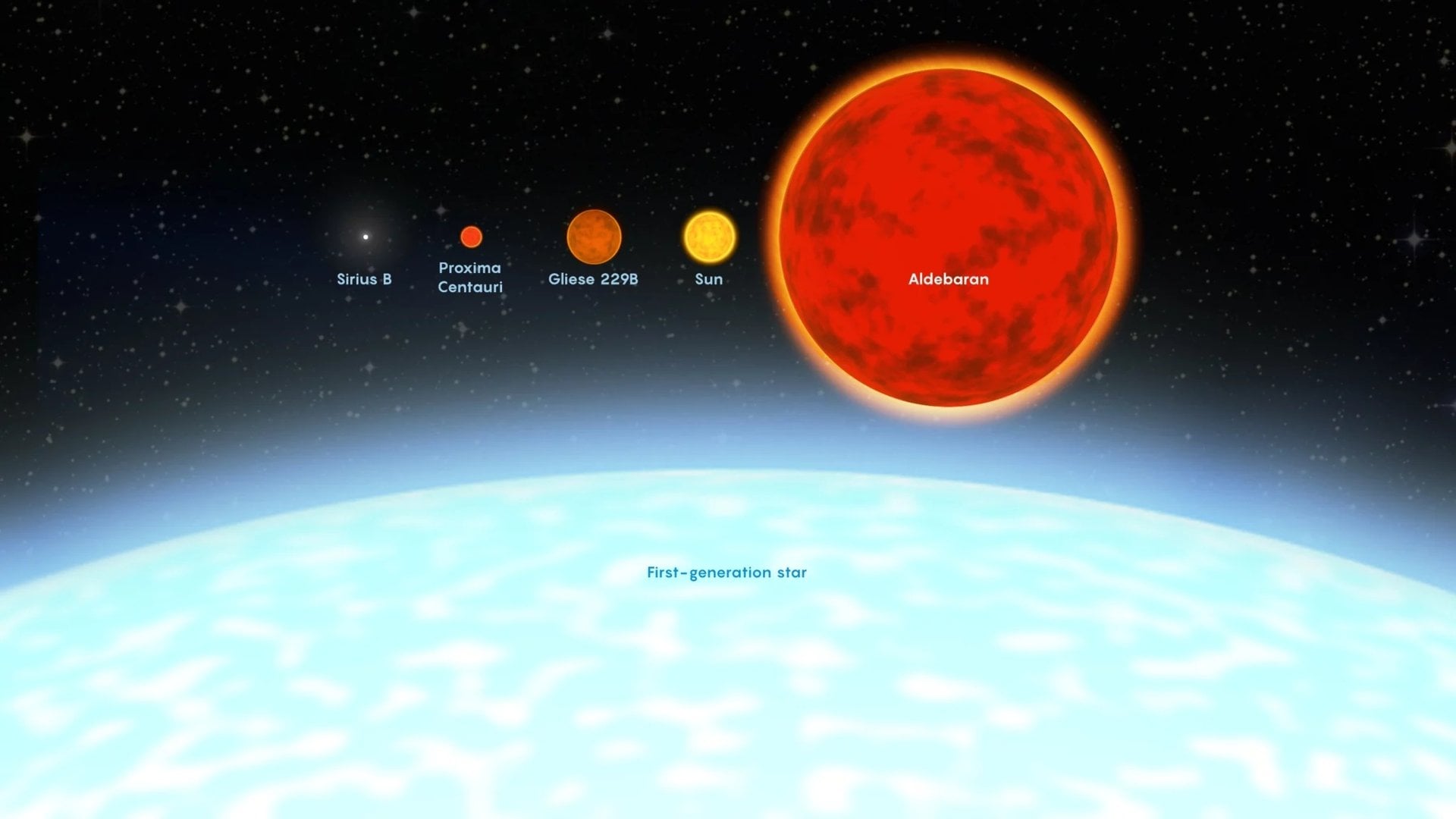We are truly lucky to live in an age where modern instruments - like the James Webb Space Telescope (JWST) - exist and are pulling back the veil on the period known as the Cosmic Dark Ages (aka. the Epoch of Reionization). Thanks to its sophisticated suite of infrared optics and spectrometers, Webb has observed some of the earliest galaxies in the Universe, shedding new light on the formation history and evolution of the cosmos. Alas, there are still many unanswered questions about the first stars (Population III), galaxies, and black holes formed.
For example, there's the ongoing question of whether these massive stars formed individually or in pairs, as most star systems do today. According to a new study led by researchers at Tel Aviv University, the first stars in the early Universe formed in binary systems. These findings have significant implications for our current cosmological models, as these stars played a vital role in the subsequent evolution of the Universe. This includes everything from shaping early supernovae and enriching galaxies with heavy elements to creating the seeds of the first supermassive black holes (SMBHs).
The study was led by Dr. Tomer Shenar from the School of Physics and Astronomy at Tel Aviv University, Dr. Hugues Sana of KU Leuven University in Belgium, and Dr. Julia Bodensteiner of the University of Amsterdam. The research was conducted as part of the Binarity at LOw Metallicity (BLOeM) survey, an international collaboration made up of astronomers from the U.S., the UK, the EU, Japan, Canada, Israel, Greece, the European Southern Observatory (ESO), and the Space Telescope Science Institute (STScI). The study was published in the journal Nature Astronomy.
 *The largest stars in the present-day universe are a couple hundred times more massive than our sun. Credit: Merrill Sherman/Quanta Magazine*
*The largest stars in the present-day universe are a couple hundred times more massive than our sun. Credit: Merrill Sherman/Quanta Magazine*
While Population III stars have never been directly observed, stellar modeling has shown that they were likely very massive - up to 1000 times the mass of our Sun. These models also suggest that they were very bright, very hot, emitted a lot of ultraviolet (UV) radiation, and were very short-lived (with lifespans of 100-200 million years). On top of that, they were composed almost entirely of hydrogen and helium since heavier elements (carbon, oxygen, silica, iron, etc.) had not yet been formed.
Over time, these elements formed in the interiors of Population III stars through the fusion of lighter elements. As they reached the end of their lifespans, these stars went supernova and shed their outer layers. This led to the Universe being seeded with heavier elements, allowing the formation of planetary systems and complex organic molecules (COMs), the building blocks of life. These elements also contributed to the formation of subsequent generations of stars, causing them to have higher levels of metal in their composition (or "metallicity").
Whether or not these stars formed in binary pairs has been the subject of debate for some time, mainly because (according to some estimates) up to 85% of all stars are in multiple star systems. In binary pairs, the orbits are so close that the stars can exchange matter and possibly merge, creating more massive objects such as compact neutron stars or black holes. This relationship not only affects the evolution of the stars themselves, but also the galaxy they reside in. During its first General Observation cycle (GO Cycle 1), Webb observed many of the first galaxies in the Universe, which were packed with massive stars.
However, the enormous distances prevented astronomers from directly examining the structures of these star systems. To overcome this, Dr. Shenar and her colleagues launched the BLOeM survey, a two-year observational campaign using the Very Large Telescope (VLT) in Chile to obtain spectra of about 1,000 stars in the Small Magellanic Cloud (SMC). Like its companion—the Large Magellanic Cloud (LMC)—this satellite galaxy is a low-metallicity environment, similar to the composition of the early Universe. As Dr. Shenar explained in a Tel Aviv University press release:
Spectral analysis of the data enables measurement of periodic motions of stars, thereby revealing the presence of stellar companions. From [a] detailed analysis of 150 of the most massive stars, we found that at least 70% are part of close binary systems. This constitutes the first direct and convincing evidence that massive stars commonly existed in binaries even under the conditions of the early Universe, perhaps even more frequently than today.
These findings resolve an outstanding question in astronomy and cosmology and provide vital information on how the first stars and galaxies evolved to create the Universe as we see it today.
Further Reading: Tel Aviv University, Nature

